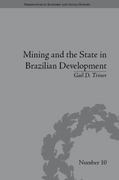Please answer the questions
Now suppose that the forest that you are considering to plant provides a non-timber value of sequestering carbon. We can generically represent the present value of all carbon sequestration within a single rotation as A(T) (we will define this term more carefully soon). The net-presentvalue to society of all forest rotations is therefore: NPV* = D + A(T) + i (WT) [pQ(T) D + A(T)] pQ(T) D + A(T) 2D AT + ()+ erT_1 3.A. [0.5 points] Suppose you want to know what the optimal rotation interval is that maximizes N PV". Denote this as T*. Write down the rst-order condition associated with T* and interpret the condition, in terms of marginal benets and opportunity costs. How does this condition differ from the condition in Problem 2? (Note: You do not need to derive the rst-order conditionsimply adapt the condition from the lectures to this setting and interpret it.) 3.3. Now let's dene A(t). We assume a social benefit valued at v for each new ton of carbon removed from the atmosphere and stored in the forest, and a social cost of t: for each ton of carbon released upon harvest. The amount of carbon stored in the forest is a linear function of the timber volume, C(t) = Q(t). Letting 1 = W and % = Q'(t), and assuming all carbon is released to the atmosphere at harvest, we can represent the carbon amenity value for a single rotation (where harvest occurs at time t = T) through the following equation: T Arr) = [a iQ'(t)e""'dt "IQ(T)E_TT i) [0.5 points] Derive and interpret an equation for A(T) that represents a constant ow of carbon rental payments over a single rotation. Is the carbon rental payment positive for all time steps t? ii) [0.5 points] Assuming the same function for Q(t) and the same values for the other parameters as in 2.3, will T" be greater or lower than '1'\"? Explain how you know, without trying to calculate T\" in Excel. 3.C. [0.5 points] Using some more sophisticated programming, and assuming '1 = 0.25, we are able to calculate that T' = 67 and A(T\") = 3, 010. Assume that any N PV values calculated reflect returns for a single acre of forest. We also know the forest stand in question is located in a region where the N PV of con- tinuous returns to agricultural land use are N PVag = 8, 000 per acre. Assuming the forest stand is currently bare land, and using the same parameters from Problem 2.3, would the landowner choose forest land use over agriculture without the carbon rental payment (Hint: calculate N PVP(T))? With the carbon rental payment (Hint: calculate N PV\"(T*))? 3D. Again, assume we have found T\" = 67. Instead of issuing carbon rental payments, the government decides it would like to achieve the same socially optimal T\" by introducing a severance tax on timber, which imposes a per-unit volume cost of w on timber harvest. This means that the private net-present- value of all forest rotations is now: NPV' = D + f (24\") [(p w)Q(T) D] i=1 =D+w-:2:2:Tz-D i) [1 point] What value should the government set w to achieve '1'\"? Assume the government is con- sidering three different values for w: 0.5, 0.75, 0.98. Use Excel to determine which one gets the closest to achieving the socially-optimal rotation interval T'. Use the same parameter values as for Problem 2.B. ii) [0.5 points] Suppose the government will pick the severance tax value that gets the closest to achiev- ing the socially-optimal rotation interval T\". Assuming the forest stand is currently bare land, would the landowner choose the forest land use over agriculture? Based on your answer, do you think the severance








